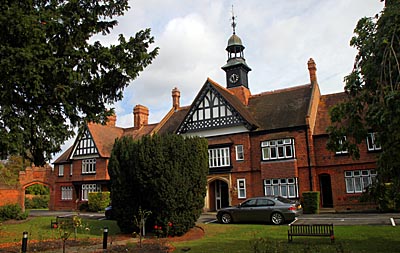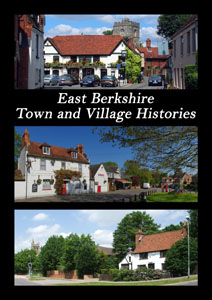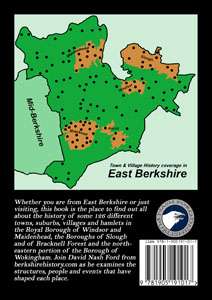 |
 |
||||||||
|
|
The palace stood near the church in the field known as Kingsbury, i.e. Kings Borough. Part of this area was excavated in the 1950s. The complex appears to have started out as a very small settlement around AD 600. It expanded slowly during the 7th and 8th centuries, until a vast transformation took place around the year AD 800. It may have become the home of King Egbert of Wessex, who annexed most of Southern England around this time. For this was when the Royals took to building their elaborate residential complex, perhaps even more splendid than the one excavated at Cheddar in Somerset. There was a triple-wheeled watermill on an artificial millstream nearly a mile long. Nearby was a stone building with glazed windows which were enormously expensive at this time. The complex may have been burnt down by the Vikings during raids around AD 900, but it was soon rebuilt with heavy timber-framed buildings. Finds range from domestic cooking pots to a gilt-bronze sword-guard. Just west of the village are three interesting old moated sites. The origins of the one on St Peter’s Hill are, as yet, unidentified and little of it remains. Just to the north, however, three good arms of a moat survive surrounding Tileplace Farm, at the end of Clayhall Lane. This is the old manor house of Tile. The family who lived there, from at least 1170 to 1580, took their name from the place. Thomas Tile was Chief Butler to King Richard II and Constable of Windsor Castle where he died in 1390. He and his father had (now lost) brasses in the parish church but his initials can still be seen in the window opposite his old tomb. The third moat is the best preserved but hidden in the woods, at Bear’s Rails just to the south-west. An enclosure there was once used as a home for unfortunate bears used in royal bear-baiting events. It lies just within the pale of Windsor Great Park and earlier was the site of the manor house of Wychemere. This was one of the places given by King Edward II to his friend, Oliver De Bordeaux, a slightly earlier Constable of Windsor Castle. However, it was soon exchanged for other lands so that the King could enlarge the royal park. The area within the moat was excavated in 1920. This revealed a very extensive complex of buildings around two vast halls. Oliver’s Hall (erroneously believed by the excavators to have been Anglo-Saxon) was extended by the Bishop of Winchester, William of Wykeham, in the 1360s and he erected a chapel nearby. The manor house at Wychemere appears to have been pulled down by Richard II in order to make repairs to Old Windsor Manor (later called Manor Lodge). In the early 18th century, an unfortunate incident at Old Windsor finally led to the summoning of the Bow Street Runners to clear up the problem of an infamous band of local robbers. They were known as the Wokingham Blacks because of their camouflaged faces. A member called Hughes had been fined £10 (approximately equivalent to £1,000 today) and had had his guns confiscated by a Keeper Miles of Old Windsor. The Blacks arrived in the night and threatened to burn down the keeper’s house. When his son tried to mediate, he had his head blown off. The keeper only escaped when the next lot of powder flashed in the pan. The gang then fled but later descended on the churchwarden’s house where, rather than have his home burnt to the ground, he was obliged to return the £10 fine. Later in the same century, Old Windsor became the home of one of the first Strawberry Hill Gothic buildings in the country. The connoisseur and collector, Richard Bateman, brother of Viscount Bateman and friend of the writer and antiquarian, Horace Walpole, took a liking to a local inn in 1730. First he orientalized the building, then in the 1750s turned it into a mock monastery called The Priory, complete with cloisters and the tomb of a 13th century Welsh bishop brought from Herefordshire. It was later the home of King George III’s daughter, Princess Elizabeth. In the 1870s and 1880s, Old Windsor became well known for its tapestry industry and French weavers almost took over the village. They made up about 100 families in a population of only just over 1000. The Old Windsor Tapestry Manufactory had been founded in 1876, by Prince Leopold, as part of the Arts-and-Crafts Movement then sweeping the Country. The weavers were brought in from Aubusson in France and worked on ‘low-warp’ looms on which tapestries were woven on the reverse. They could only see the frontal design using mirrors. They produced superb tapestries, including sets of the ‘Merry Wives of Windsor’ and the ‘Tales of King Arthur’. They won prizes over and above the French at the Paris Exhibition of 1878 and patrons, of course, included the Royal family. However, fears of a large industrial development being established so close to Windsor Castle led to the manufactory’s closure in 1890. The beautiful weavers’ hall which was retained as a village hall for many years is now a series of flats called The Tapestries. Read more history of
Old Windsor and other settlements in the parish in David Nash Ford's book, 'East Berkshire Town and Village
Histories'.
|
||||||||
| © Nash Ford Publishing 2001; 2020. All Rights Reserved. | |||||||||



 There was an Anglo-Saxon royal palace in Old Windsor, the predecessor of
There was an Anglo-Saxon royal palace in Old Windsor, the predecessor of

